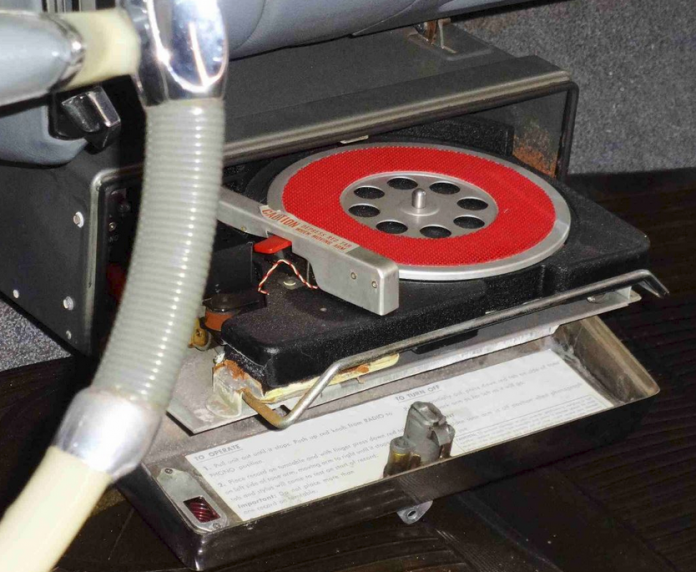Long live the record player! Earlier this year, vinyl records outsold CDs for the first time in 34 years. So to celebrate, let’s have a look at an early attempt to bring vinyl recordings into cars.
Today’s featured option is the aptly named Highway Hi-Fi. The Highway Hi-Fi was a compact record player that was optional in certain Chrysler-made cars from the 1956-1958. Designed and produced by CBS, this compact record player came in a metal case attached to the underside of the dash. Opening the door revealed a small platter and tonearm, ready to receive a record. The player was available only on factory orders — it was not made available for dealer installation.
The player itself did not have any amplification or sound processing, the signal was routed to the factory radio and then pumped out to the speakers from there. In an attempt to make the records usable in a car, a new, slower speed was developed. No 78s, 45s or 33 1/3s here, but instead a lazy 16 2/3 rpm to give some decent playing time on a small diameter disc.
So, how did it work? Well, as with many things in theory, it was a good idea that didn’t always deliver in the real world. A fresh, Eisenhower-era Interstate with smooth paving was no problem — everything else, not so much. Customer complaints about records skipping and limited media availability (only about 45 titles were ever available in the 16 2/3 rpm format) led to the early demise of this option.
Undaunted, Chrysler took another swing at road going records in the 1960 model year with a new unit developed with RCA, and the Highway Hi-Fi moniker was dropped. The updated unit used standard 45 rpm records and could accommodate up to 12 discs in a “stack ‘em and crack ‘em” mechanism similar to those available on home turntables. However, as with the first generation, preventing skips continued to be a problem. The RCA unit used a heavy, spring loaded tonearm in an attempt to reduce skipping. Not only did it not work as well as hoped, but the pressure from the tonearm turned the player into a record lathe.
So in 1961, the experiment with roadgoing discs came to an inglorious end until the CD era many years later.



